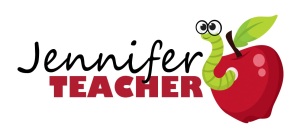I can’t emphasis enough how the proper use of ’emphasis’ helps the ESL learner to sound more fluent when speaking English. Learning how to use emphasis properly is helpful not only in preparing for English proficiency exams such as the TOEFL, IELTS or the TOEIC Speaking Test, but is equally important for academic and business situations.
Emphasis is the word in a sentence which is spoken with emphasis, in other words usually at a higher pitch and/or accompanied by a pause in speech. There are a variety of reasons why emphasis is used. Look at this list below for some reasons.
WHEN IS EMPHASIS USED?
- the speaker wants to call to attention what is most important. This is common when expressing opinions.
- the speaker wants to imply or infer something without saying it directly.
- the speaker is being accusatory.
- the speaker is disagreeing with something said.
- the speaker is being argumentative or sarcastic (emphasis is used liberally in arguing) ^^
- the speaker has used inversion – in other words, changed the order of a sentence by adding a prepositional phrase at the beginning (example: SUDDENLY, the cat jumped up and scratched his face.)
- the speaker wants to affirm or deny some action. (example: John DIDN’T go to school yesterday.)
LEARNING TO UNDERSTAND EMPHASIS
This is no easy task. Becoming fluent in English is all about practice, exposure and time. My husband is Korean and although is English is great, he still has difficulty with emphasis. In fact, our conversation today inspired this blog post. He said that when I speak Korean I add in English-style emphasis, when instead, I should learn to use proper Korean emphasis in all cases. I suppose I had thought emphasis to be a more universal language tool… I was wrong. There’s my ‘English-centric’ point of view creeping in again! 🙂
Since I’ve found that giving good examples is often the easiest way to “explain” something to my students, take a look below. This is excerpted from a printable worksheet I created earlier which is in a matching activity for students. You can download it here: Jennifer Teacher – Using Emphasis
Take a look at the following examples, where the bolded words are emphasized. Say them aloud and notice how the meaning, intention, inference or implication of the sentence changes.
a) I did not say you stole my red bandana. —> Someone else said it.
b) I did not say you stole my red bandana. —> Disputatious denial; Argumentative.
c) I did not say you stole my red bandana. —> Disputatious denial; Argumentative.
d) I did not say you stole my red bandana. —> You stole something else.
e) I did not say you stole my red bandana. —> Someone else stole it.
f) I did not say you stole my red bandana. —> You did something else with the bandanna, not steal it.
g) I did not say you stole my red bandana. —> You stole someone elses’ bandanna.
h) I did not say you stole my red bandana. —> You stole one of a different colour.
i) I did not say you stole my red bandana. —> I “implied/wrote/suggested” you stole it, not “said.”
TEST YOUR UNDERSTANDING!
Do these examples help you to understand the proper use of emphasis? If so, try explaining the meanings of the following three sentences (leave a comment with your answers):
Q1) Did you happen to get me a coffee, too?
Q2) What time are we supposed to meet on Saturday?
Q3) Why are you studying English?
MORE RESOURCES
If you feel you need some more help, try these external resources. There aren’t many available on this unique subject, but here are a couple I’d recommend:
About.com: Learning to use Emphasis in English
Prof. Argenis A. Zapata: Ways of Expressing Emphasis in English
Tags: conversation, Emphasis, Fluency, Learning Materials, pronunciation, speaking, Teaching English, TOEFL Test, TOEIC
 advanced ESL students, to join me in reading all the books on
advanced ESL students, to join me in reading all the books on 


